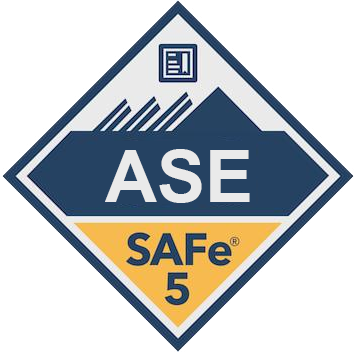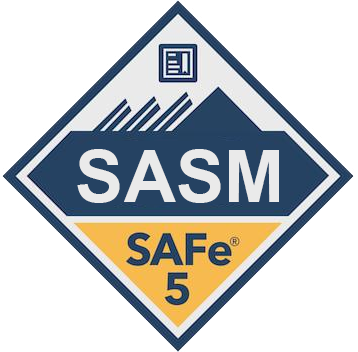Revealing the Untapped Potential: The Unrealized Value of a Product
Introduction
In the world of business, companies must develop products that not only meet consumer needs but also offer value that goes beyond their initial purposes. However, not all products realize their full potential right from the start. Many times, untapped or unrealized value lies hidden within these products, waiting to be discovered and harnessed.
In this article, we will delve into the concept of unrealized value and explore how it can impact businesses, using real-life examples to illustrate its significance.
Understanding Unrealized Value
Unrealized value refers to the additional benefits, possibilities, or market segments that a product could tap into but are not maximized initially. These untapped features or opportunities might be due to a lack of awareness, improper positioning, insufficient market research, or failure to adapt to changing consumer demands.
Companies that fail to explore and exploit the unrealized value of their products risk missing out on significant growth and competitive advantages. Therefore, recognizing and capitalizing on this hidden potential is critical for business success.
Real-Life Example: Nintendo Wii
One remarkable example of unrealized value lies in the story of the Nintendo Wii gaming console. Upon its release in 2006, the Wii introduced a groundbreaking motion controller, enabling users to play games by physically mimicking actions such as swinging a tennis racket or bowling a strike.
It was marketed not only as a gaming console but also as a lifestyle product, targeting a broader audience beyond traditional gamers.
While the Wii was initially successful, Nintendo didn’t realize its full potential until they uncovered its untapped value. The console attracted a vast demographic, including families, seniors, and even physical therapy patients, who found it useful for balance and rehabilitation exercises.
Recognizing this unexpected appeal, Nintendo quickly partnered with hospitals and rehab centers to create specialized Wii Fit programs for patient recovery.
By capitalizing on the unrealized value of the Wii and expanding its market reach, Nintendo prolonged the console’s lifecycle and achieved substantial sales figures that surpassed its competitors during that perio
Tap into Unrealized Value
To unlock the unrealized value of a product, businesses can undertake the following strategies:
1. In-depth Market Research: Conduct thorough market research to identify potential target audiences, new trends, and unmet needs. This research can uncover previously unknown markets or applications for existing products.
2. Enhanced Product Features: Continuously innovate and add features or functionalities to products. By addressing consumer pain points or providing additional benefits, they can attract new segments and enhance customer satisfaction.
3. Targeted Marketing Strategies: Develop tailored marketing campaigns that highlight the hidden potential of the product. Showcase use cases to demonstrate how it can address a wider range of needs and resonate with various target audiences.
4. Partnerships and Collaborations: Seek collaborations with companies or institutions that can help leverage the unrealized value. Collaborations can provide new insights, additional resources, and expansion opportunities.
Some examples are data on the Unrealized value of a product and calculation
Let’s suppose we have an electronic gadget called a “Smart Tech Watch”.
Sample data:
– Cost of production: $50
– Selling price: $100
– Quantity produced: 500 units
– Quantity sold: 300 units
Using this data, we can calculate the unrealized value of the remaining unsold units:
1. Calculate the total value of the produced units:
Total value = Cost of production per unit * Quantity produced
Total value = $50 * 500 units
Total value = $25,000
2. Calculate the realized value of the sold units:
Realized value = Selling price per unit * Quantity sold
Realized value = $100 * 300 units
Realized value = $30,000
3. Calculate the unrealized value:
Unrealized value = Total value – Realized value
Unrealized value = $25,000 – $30,000
Unrealized value = -$5,000
In this example, the unrealized value of the remaining unsold Smart Tech Watches is -$5,000, meaning that the company has a potential loss of $5,000 due to the remaining inventory not being sold yet.
To start tracking the unrealized value of a product, follow these steps:
1. Determine the Key Performance Indicators (KPIs): Identify the metrics that will measure the unrealized value of your product. This could include factors like product adoption rate, customer feedback, market demand, or potential revenue.
2. Define a baseline: Establish a starting point or benchmark for your product’s unrealized value. This will allow you to track progress and compare against future measurements. Determine the current value and set realistic targets for improvement.
3. Gather data: Collect relevant data to measure the unrealized value. This can involve various sources such as surveys, customer interviews, market research, sales data, and feedback from internal stakeholders like sales or marketing teams.
4. Analyze and interpret the data: Analyze the data collected to gain insights into the unrealized value of your product. Look for trends, patterns, and correlations that indicate potential strengths or weaknesses. Understand the factors that contribute to the unrealized value and assess their impact.
5. Set up a tracking mechanism: Establish a system or process to track the unrealized value over time. This could be a spreadsheet, dashboard, or specialized software that allows you to input and access relevant data easily. Regularly update the data to monitor the changes and ensure accurate tracking.
6. Monitor progress: Continuously monitor the changes in unrealized value as you implement changes or improvements to your product. Compare the data against your baseline and track how the value evolves. Regularly assess the impact of various initiatives on the product’s unrealized value.
7. Review and adjust: Based on the insights gained from tracking, review your product strategy and make necessary adjustments to improve its unrealized value. Use the data to prioritize areas where enhancement is needed and focus on efforts that can maximize the product’s potential.
8. Communicate and collaborate: Maintain open communication with relevant stakeholders such as customers, team members, and management, sharing insights and progress related to the unrealized value. Collaborate with different departments to align strategies and leverage their expertise in enhancing the product’s value.
By following these steps, you can effectively track the unrealized value of a product and make informed decisions to drive its growth and success.
The Pros and Cons of the Unrealized value of a product?
Pros :
1. Future potential: Unrealized value represents the potential value that a product can bring in the future. It allows businesses to assess the long-term profitability and growth prospects of their offerings.
2. Competitive advantage: Realizing the unrealized value of a product can give a company a competitive edge over its competitors. By identifying untapped opportunities and finding ways to capitalize on them, businesses can differentiate themselves in the market.
3. Innovation and product development: Recognizing the unrealized value helps drive innovation and encourages businesses to invest in research and development to unlock the product’s full potential. This can lead to improved features, functionalities, and overall customer satisfaction.
4. Higher valuation: Assessing the unrealized value of a product positively impacts a company’s valuation. It contributes to a more robust market perception, investor confidence, and potentially higher stock prices.
5. Business growth and expansion: Creating strategies to unlock unrealized value can drive business growth. By identifying untapped markets or segments, a company can increase its customer base, expand its reach, and generate additional revenue streams.
Cons:
1. Uncertainty: Unrealized value is speculative and uncertain, as it is based on assumptions and projections. There is a risk that the expected value may not materialize, leading to disappointment and potential financial losses.
2. Additional investment required: Realizing the unrealized value often necessitates additional investment in research, development, marketing, and other initiatives. This can strain a company’s resources, especially if the returns on these investments take longer than anticipated.
3. Market and consumer behavior changes: The unrealized value of a product heavily relies on market conditions and consumer behavior. If these factors change unexpectedly, the anticipated value may diminish or disappear completely.
4. Competitive challenges: Competitors may also recognize the unrealized value and try to capitalize on it. This can lead to increased competition and potential erosion of the anticipated value for a company.
5. Opportunity cost: Focusing on unrealized value may divert resources and attention from other aspects of a business. It is important to consider the opportunity cost and prioritize efforts accordingly to ensure overall sustainability and profitability.
Conclusion
In conclusion, understanding and harnessing the unrealized value of a product can significantly impact a company’s success. Products with untapped potential stand to benefit greatly from market research, enhanced features, targeted marketing, and strategic partnerships.
Ultimately, by recognizing and tapping into unrealized value, businesses can extend the life cycle of their products, penetrate new markets, increase revenue, and solidify their competitive position in the industry.
For more posts like this follow Agile Digest social Pages or subscribe to our newsletter:
Wesbite: https://agiledigest.com/
Facebook: https://www.facebook.com/agiledigest/
LinkedIn: https://www.linkedin.com/company/agiledigest/
Youtube: https://www.youtube.com/@AgileDigest








































































